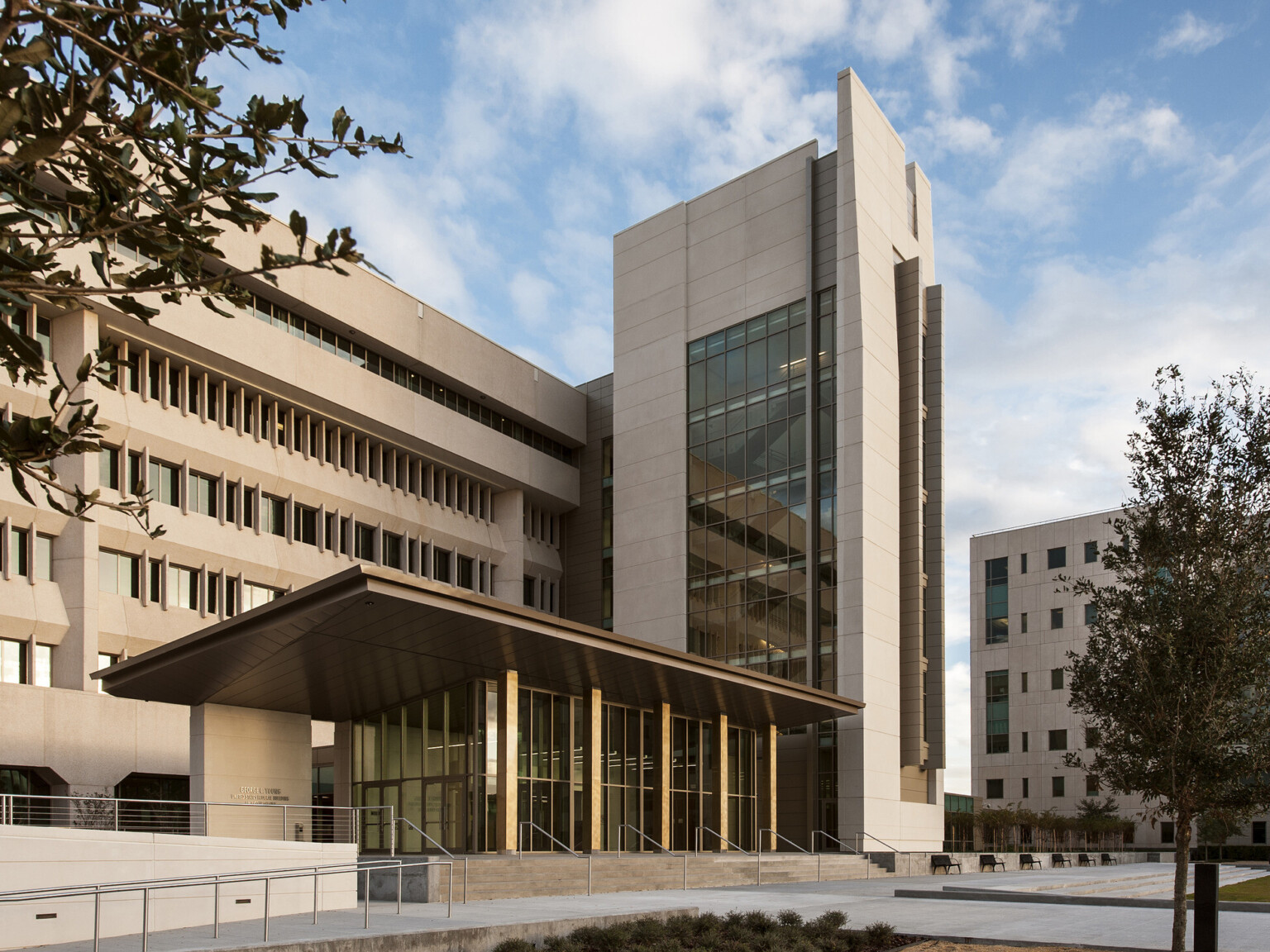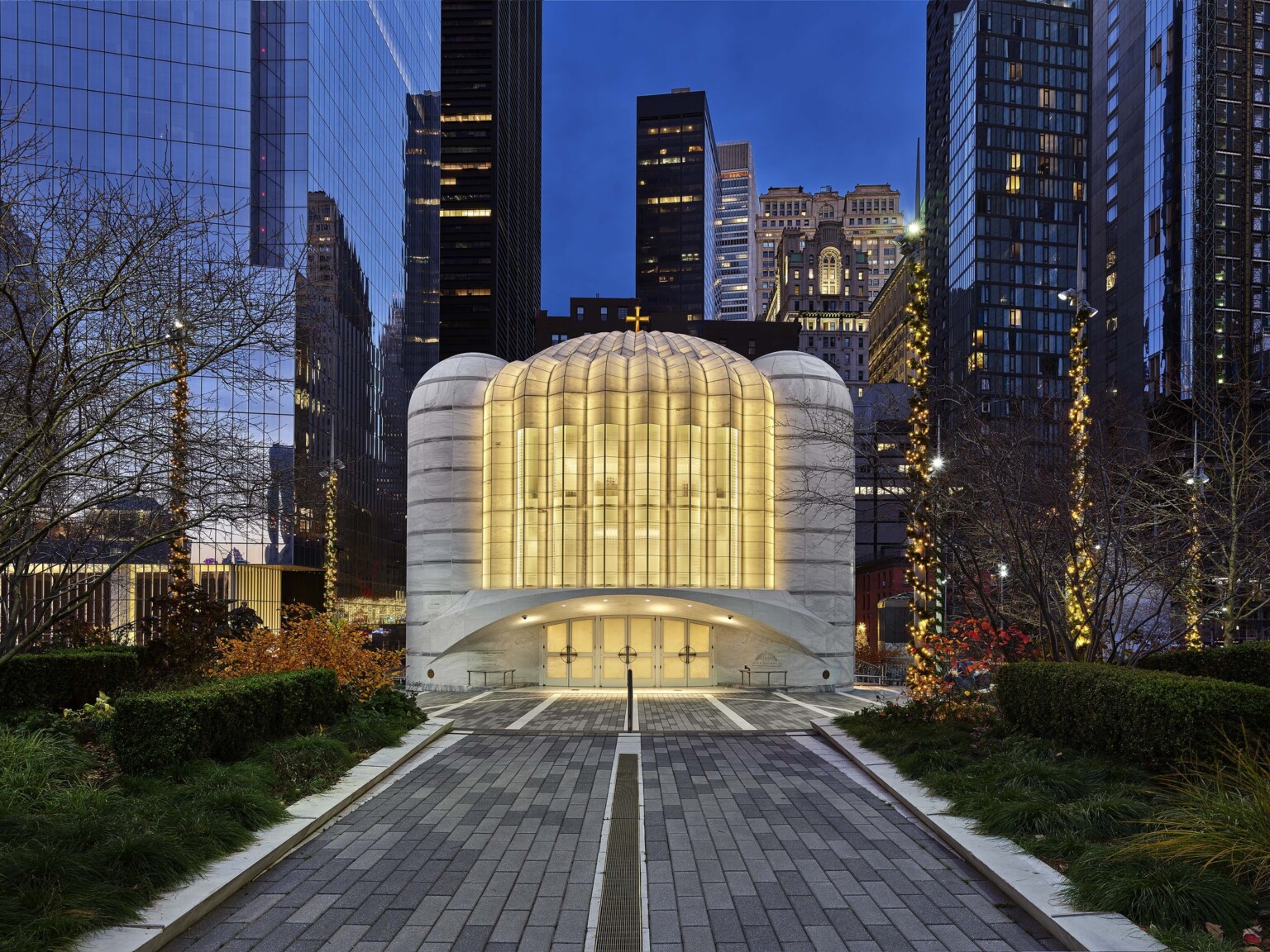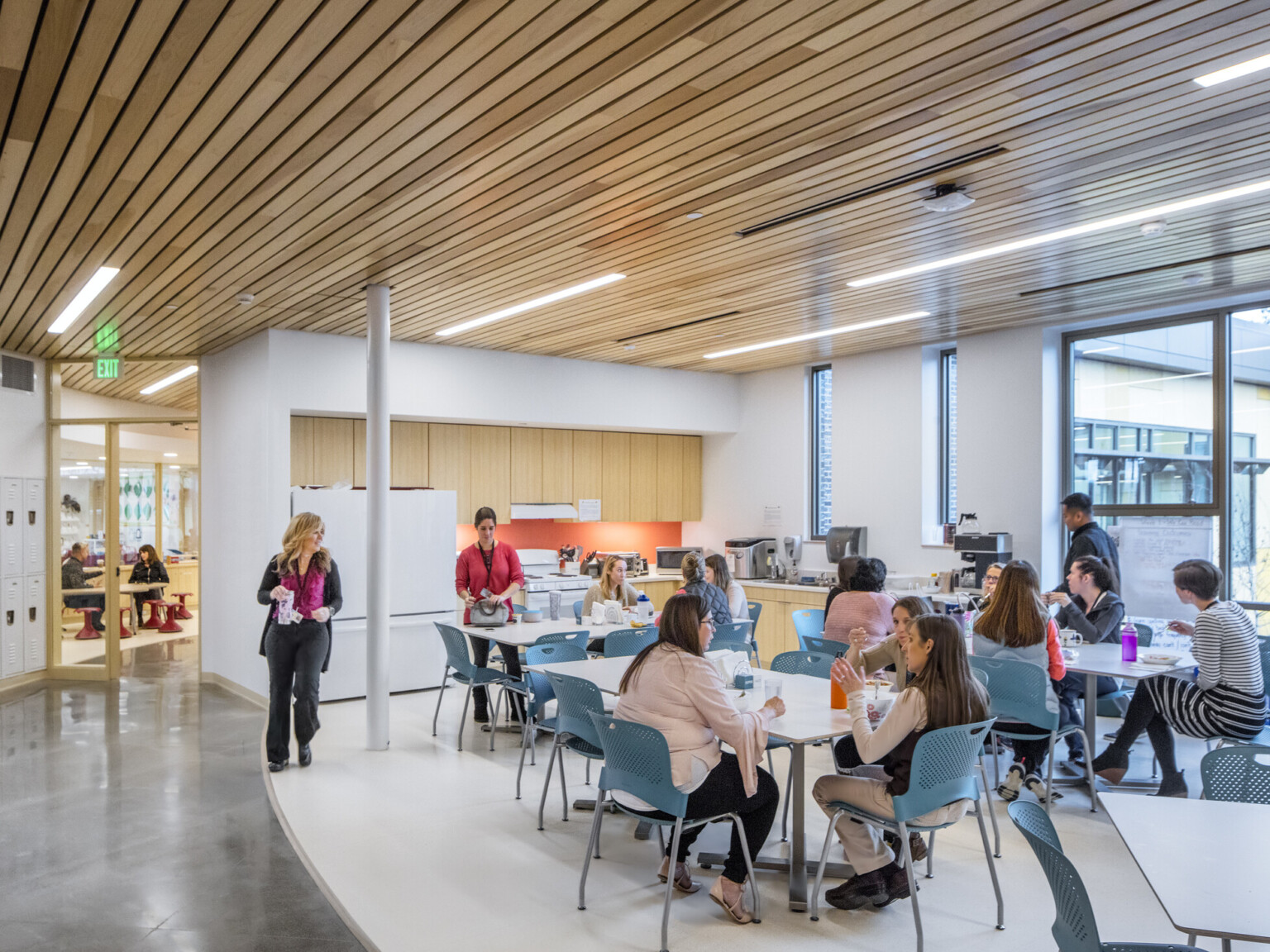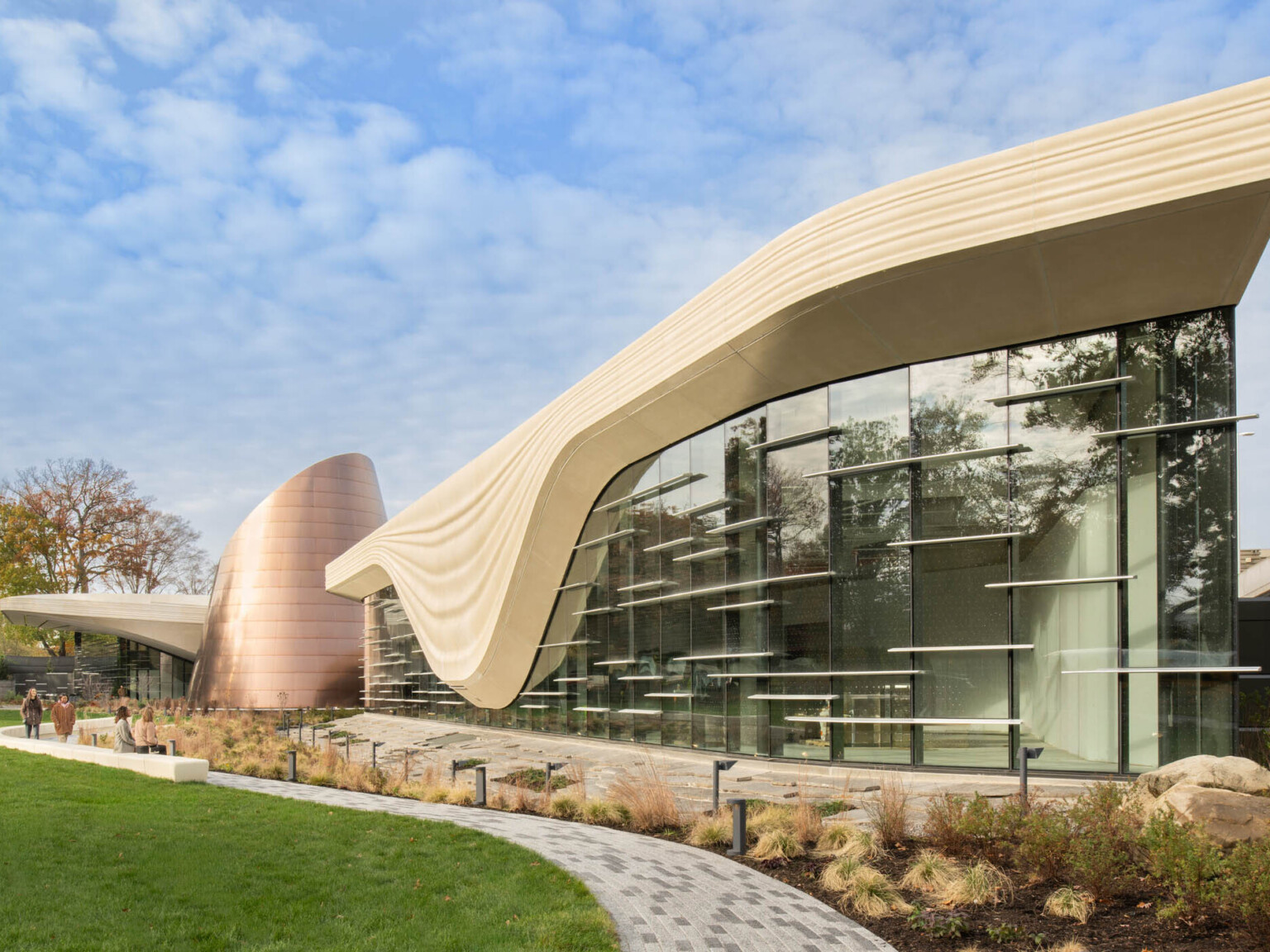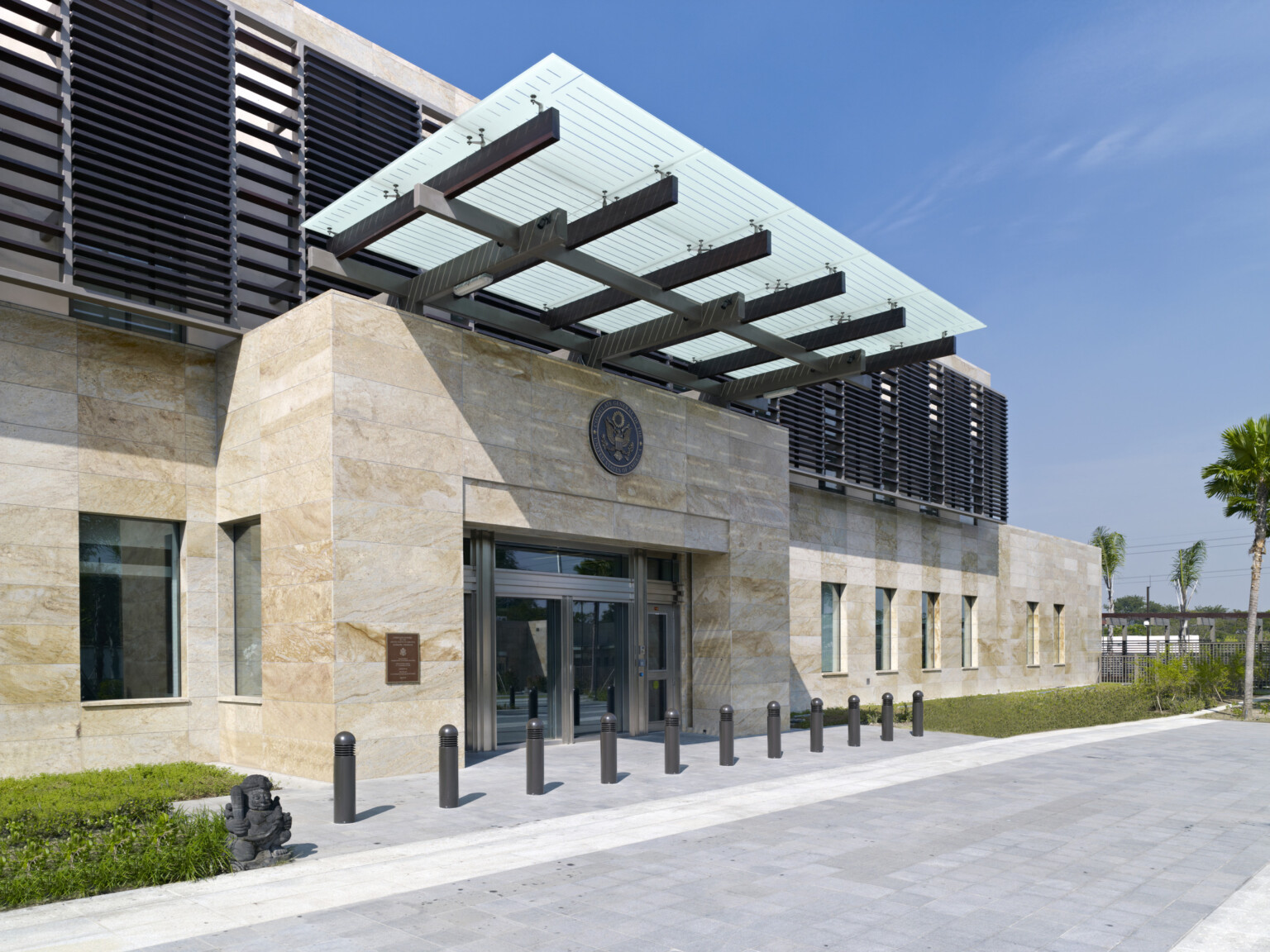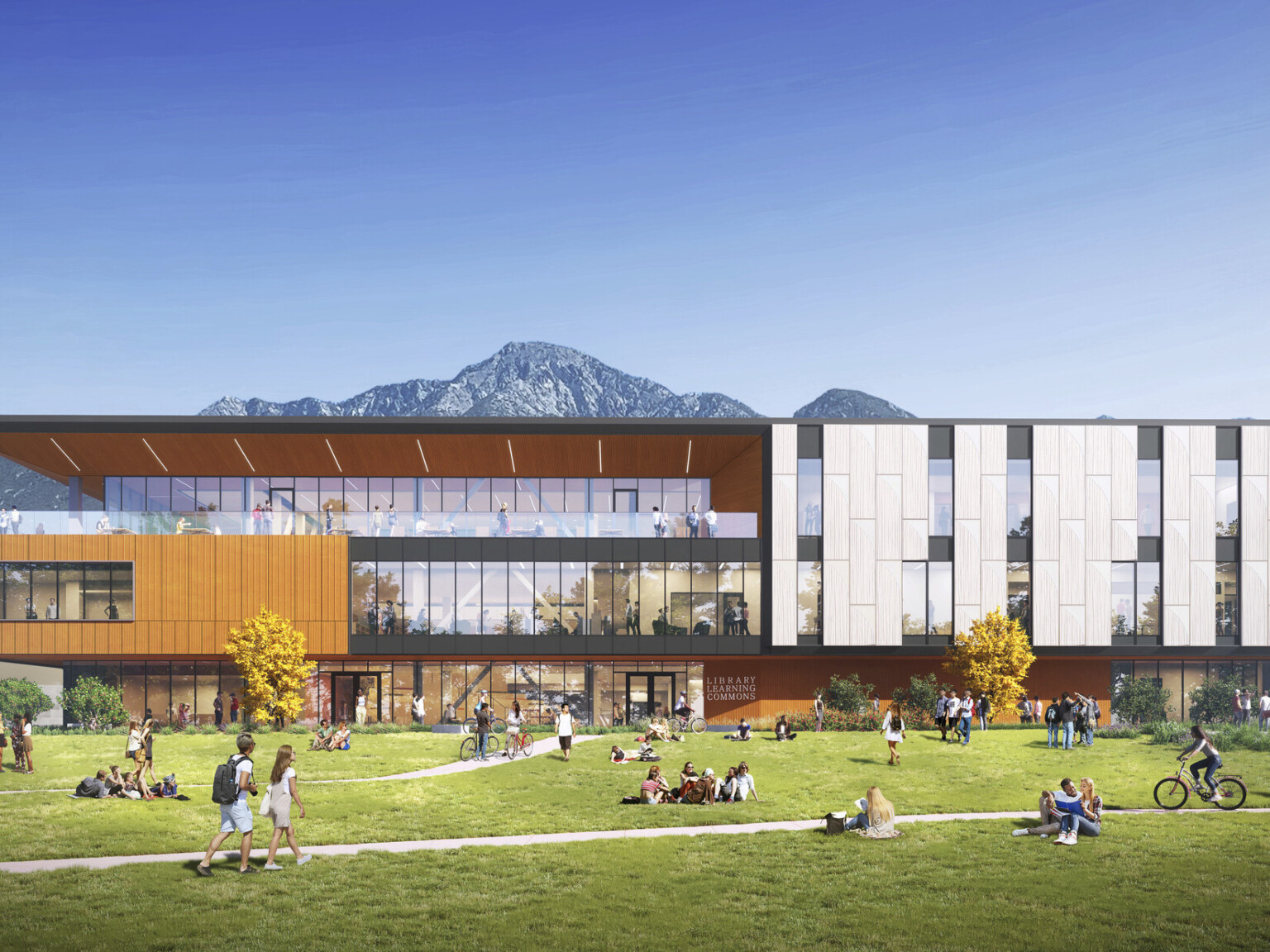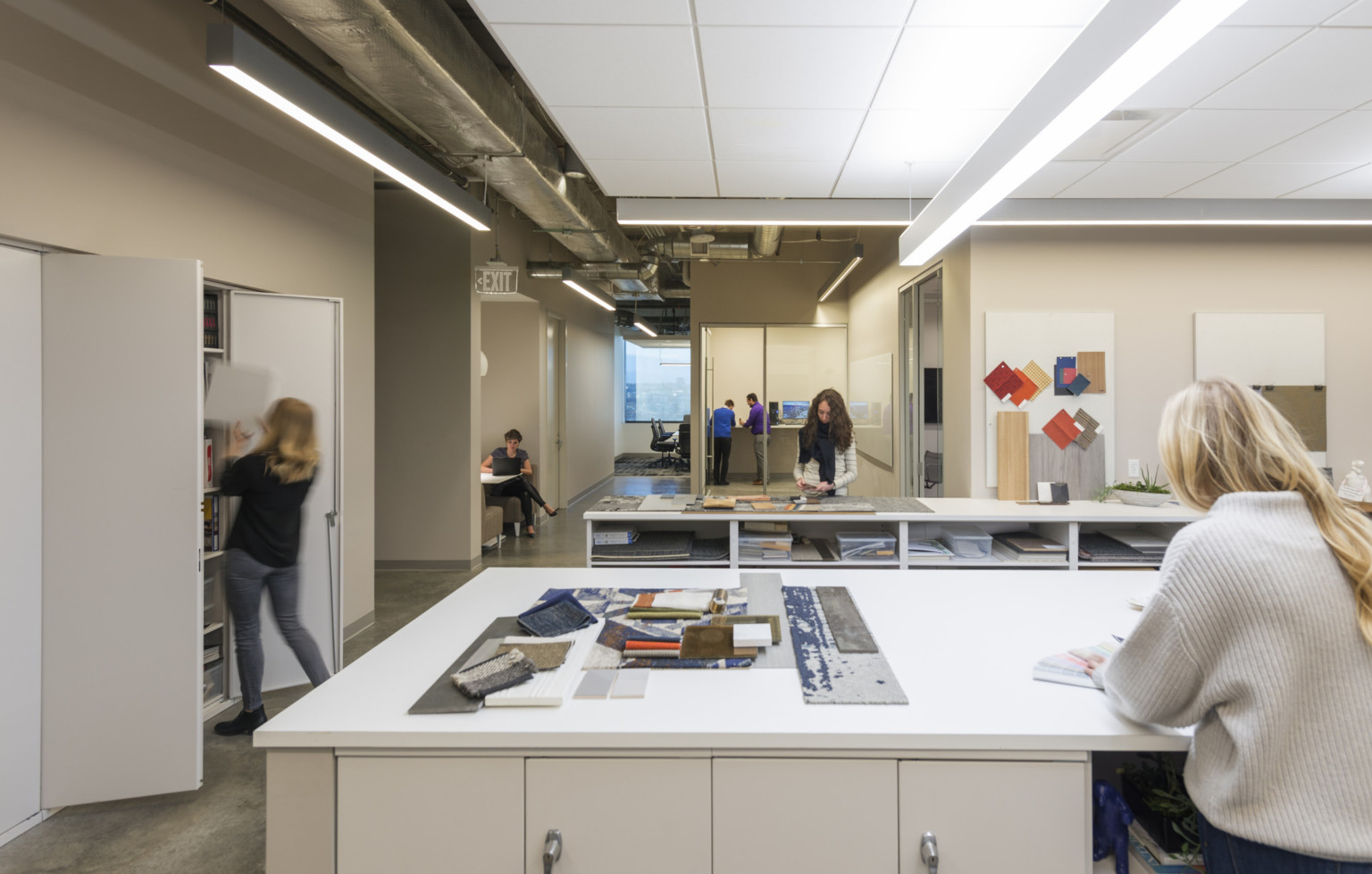
The Psychology of Returning to the Office: How Design Helps
Psychological Safety
The ability to freely express concerns and ideas without fear of reprisal or judgement is called psychological safety. This is one of the key elements of trusting and successful team dynamics, allowing everyone to better coordinate work with a free exchange of exploratory or innovative ideas. Developing the rapport and comfort to talk about concerns in the workplace isn’t just the path to psychological safety – it is psychological safety.
The fastest route to building psychological safety at work is to have direct conversations in small or large groups with proper social distancing. Gathering in a common space that is designed for physical comfort and allows easy conversations with social distance may at first help people ease back into the workplace. Then, as a new rhythm is established, it can become a gathering place for sharing not only concerns, but also kudos and celebrations.
Transparency and Privacy
One of the first things employees will want to be assured of is cleanliness at work. Now more than ever, we want to see where others are and know that they’re following agreed-upon health and safety procedures. This can include visible and easily accessible cleaning products to sanitize one’s work surface, as well as physical signs that cleaning staff has completed daily tasks.
Other tools to communicate healthy spaces include indoor air quality monitors, which will register not only the quality of air but also when cleaning procedures have been used prior to the start of the day, combined with a centrally located visual dashboard showing monitor readouts from around the office. Data transparency demonstrates that an organization is committed to open and clear communication with employees about health.
Creating good sight lines to shared common space from workstations allows for passive surveillance of those shared areas, which encourages all employees to follow policies out of respect for fellow employees in these common spaces.
Space to Heal
Balancing transparency and privacy can sound like a design challenge, but the need for both spaces can inform workplace design. Time away from the main workstation can be restorative and even more crucial as employees tackle unexpected stress when returning to work. Studies on privacy and control show that we are comfortable giving up privacy for better views and amenities, and willing to forego showpiece spaces when we want total privacy. This suggests layouts that would focus communal space and central hubs near windows, and locate privacy spaces in areas that otherwise can’t offer the best views – such as near the core of the building.
Existing small meeting rooms or private offices in out-of-the-way locations may be given up for a more equalized layout; those spaces can be converted into restoration rooms with features to support mindful moments of calm: dimmer lighting, soft textures in both finishes and cushioning on furniture, seating that offers semi-reclined postures, plants or images of nature, and acoustic treatment to minimize noise while offering nature sounds or atonal patterns of noise, such as bird songs.
Equality, Equity, and Universal Design
Another means to reestablish trust among staff is to place equal weight on the wellbeing of all employees by representing this value in physical space amenities. Creating layouts where all employees have equal access to the best views, pleasant daylight, and work areas free of distraction communicates equal respect to everyone’s user experience. That may mean targeting desirable areas as common spaces rather than permanently assigned workstations.
In addition to equality, it is important to design for equity. A blanket standard for ergonomic features on furnishings across the entire workplace may sound equal but does not offer actual equity when employees have different needs to complete different tasks. Furniture standards that acknowledge both roles and individual differences – not necessarily personal preference – communicates that the organization and the designer understand the nature of jobs, in tandem with the human experience.
Universal design principles have been shown to increase employees’ perception of being valued and included at work. If workstations are adjustable to different physical needs and social spaces make room for comfortable access for occupants who may move, see, or hear differently than the majority of the staff, this expresses value for all employees, not just the majority.
The COVID-19 pandemic will not only change the way we work, but also the way we feel about work. And every organization has a new opportunity to create safe, healthy, trustworthy environments – now and for the future.
We want to understand how mood, behaviors, engagement, and work modalities shifted during the work-from-home period. Review our preliminary findings, and contribute to the survey yourself.
References
Bonaccio, S., O’Reilly, J., O’Sullivan, S. L., & Chiocchio, F. (2016). Nonverbal behavior and communication in the workplace: A review and an agenda for research. Journal of Management, 42(5), 1044-1074. (https://journals.sagepub.com/doi/abs/10.1177/0149206315621146)
Dolan, V. R. (2019). Illness and the American Workplace: Issues and Implications for Employers and Employees. (https://academicworks.cuny.edu/bb_etds/88/)
Delizonna, L. (2017). High-performing teams need psychological safety. Here’s how to create It. Harvard Business Review, 8, 1-5. (https://pluribus-europe.com/docs/HBR_Pyschological%20safety.pdf)
Frazier, M. L., Fainshmidt, S., Klinger, R. L., Pezeshkan, A., & Vracheva, V. (2017). Psychological safety: A meta‐analytic review and extension. Personnel Psychology, 70(1), 113-165. (https://onlinelibrary.wiley.com/doi/abs/10.1111/peps.12183)
Heerwagen, J. H., Heubach, J. G., Montgomery, J., & Weimer, W. C. (1995). Environmental design, work, and well being: managing occupational stress through changes in the workplace environment. Aaohn Journal, 43(9), 458-468. (https://journals.sagepub.com/doi/abs/10.1177/216507999504300904)
Hu, J., Erdogan, B., Jiang, K., Bauer, T. N., & Liu, S. (2018). Leader humility and team creativity: The role of team information sharing, psychological safety, and power distance. Journal of Applied Psychology, 103(3), 313. (https://psycnet.apa.org/doiLanding?doi=10.1037%2Fapl0000277)
Laurence, G. A., Fried, Y., & Slowik, L. H. (2013). “My space”: A moderated mediation model of the effect of architectural and experienced privacy and workspace personalization on emotional exhaustion at work. Journal of environmental Psychology, 36, 144-152. (https://www.sciencedirect.com/science/article/abs/pii/S0272494413000534)
Mahajan, H. P., Milchus, K., Harris, F., Linden, M., Moon, N., & Sanford, J. A. (2019, October). Do coworker interactions impact workplace participation of people with disabilities?. In ASSISTIVE TECHNOLOGY (Vol. 31, No. 5, pp. 239-239). 530 WALNUT STREET, STE 850, PHILADELPHIA, PA 19106 USA: TAYLOR & FRANCIS INC. (https://catea.gatech.edu/sites/default/files/Do_coworker_interactions_impact_participation_.docx.pdf)
Newman, A., Donohue, R., & Eva, N. (2017). Psychological safety: A systematic review of the literature. Human Resource Management Review, 27(3), 521-535. (https://www-sciencedirect-com.proxy.library.cornell.edu/science/article/pii/S1053482217300013)
Yildirim, K., Akalin-Baskaya, A., & Celebi, M. (2007). The effects of window proximity, partition height, and gender on perceptions of open-plan offices. Journal of Environmental Psychology, 27(2), 154-165. (https://www.sciencedirect.com/science/article/abs/pii/S0272494407000059)

